Here in Minneapolis, we have a group called the International Cartoonist Conspiracy that has, among other things, monthly jam comic sessions at Diamond's Coffee Shoppe on the first Thursday of every month. A dozen or so cartoonists show up and by the end of the night we have a sixteen page comic, ready for scanning.
So what are jam comics? Simply put, a comic produced by more than one person, with no one cartoonist doing more than one panel in a row. Draw one panel, pass it on. It can create an unreadable mishmash or a work of sheer genius.
In the interest of making it more the latter than the former, I offer you these tips:
1. Involve the previous panel.This should be an obvious one. You want your panel to follow logically from the one before it. Cutting away to another scene CAN be funny, but the one thing you will never have to do in a jam comic is introduce MORE randomness. Mouse over the panel for a better solution.
2. Set up a few options for the next panel. Don't be a jerk, Mac. You had to follow someone and now someone has to follow you. Give the man something to work with. Of course we all want to be the funny guy who delivers the punchline, but your obligation is to keep the story moving.Mouse over the panel for a better solution.
3. Try to tie the pages of the story together. This one you have to agree on as a group. What we do at the Cartoonist Conspiracy jams is number the pages beforehand and start on random pages, all with a theme (most recently: Giant Robots vs. The Eighties). Then, when you are getting towards the bottom of page 11, you need to hunt down page 12 and find out how it starts so you can make a smooth transition. This is an example from the January 2007 Jam. Steve Stwalley (red border) was the last to draw his panel, and he neatly tied in page 6 to page 7. Dank! deserves a nod as well, for creating the "Prepare to die, Nell Carter" panel out of thin air and thus kicking off that night's theme.
4. Sign your panels. Well, we almost never do, but it's nice for people to be able to know who did what. Sean Tenhoff is the only one who ever signs his panels, and therefore he's the only one who we ever are absolutely certain even worked on these things.
5. Create the panel borders beforehand. Again, you'll have to agree to this as a group, but sometimes it's nice to have a clean grid (or random assortment of panels) to work from. People like freedom, but they also like to work within interesting constraints.
6. Do a cover and a back signature page. Those are nice, because when you're wondering who did some of those panels, you can always look on the back and figure it out by the process of elimination. You should start passing that one around the table as soon as people arrive. The cover is fun, too, when someone starts sketching it out and other people finish.
7. Give your characters some character. Every story starts with a character wanting something. Give 'em a little internal monologue where they want pants that fit. Or to win the great Pan-Galactic Drag Race. Or for their sensei to believe in them. It's nice to have something for people to use if they're at a loss for what to do with your character.
8. Stop hoping it's going to be "good". Jam comics are never "good". They are sometimes "terrible" and every now and then "awesome", and usually "both", but they are never what you expect them to be. So stop ostracizing that stick-figure guy at the end of the table and don't hog the cover even if you think you're great.
9. No nuclear explosions. Come on. I know your story's going nowhere fast, but that's the lamest cop-out of an ending ever. Actually, come to think of it, nuclear explosions are pretty cool. If you have some in your jam comic, send them to us and we'll put them in a slideshow.
Have fun.
And are you in Minneapolis? Come to the First Thursday Jam! Next one is on Thursday, February first!
Tuesday, January 23, 2007
Subscribe to:
Post Comments (Atom)

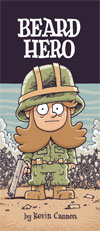
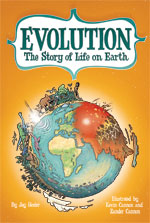
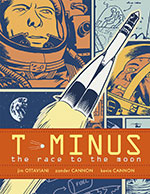
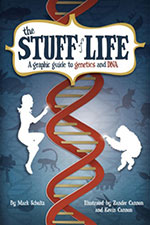
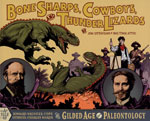
3 comments:
nice tips, z.
i do agree that i think the biggest problems at jams can be the way two panels right next to each other don't connect or make a lick of sense because the artist isn't playing by the old improve rule of "never say no". Or is it "always say yes". either way, ALWAYS ALWAYS pick up where the last person left off.
I've found if you(meaning: me)has a good idea for a gag, be sure to START a page with said gag, but always leave room(both on the page and in the gag itself) for people to riff off it.
I've noticed new people to the group are often intimidated when it comes to starting a page, but frankly i think if someone wants to do a non-sequitar gag starting the page is the way to go--then leave it to the poor schmuck who has to connect the previous page to your gag to make it all work.
(a task i also relish)
oh, and nuclear explosions are WONDERFUL tools for 24 hour comics, if not jam comics.
Great article! An additional number for the list...
9) Start with a theme. Any theme. We usually start with two or three of them. Themes can be chosen by consensus or picked at random by closing your eyes and dropping your finger down on a word in a newspaper or on a heavily tattooed gentleman. This word can then be ignored or used as a theme. Themes help give the jams some cohesiveness, or the illusion of some slight cohesiveness when there really isn't any. It's pretty much a necessity if you are going to attempt one of the multi-page jams like we've been doing (generally 16 pages a month).
Also, we haven't done it much deliberately so far, but having a character or two established at the beginning that can be used throughout the jam can also help a lot with cohesiveness.
Post a Comment